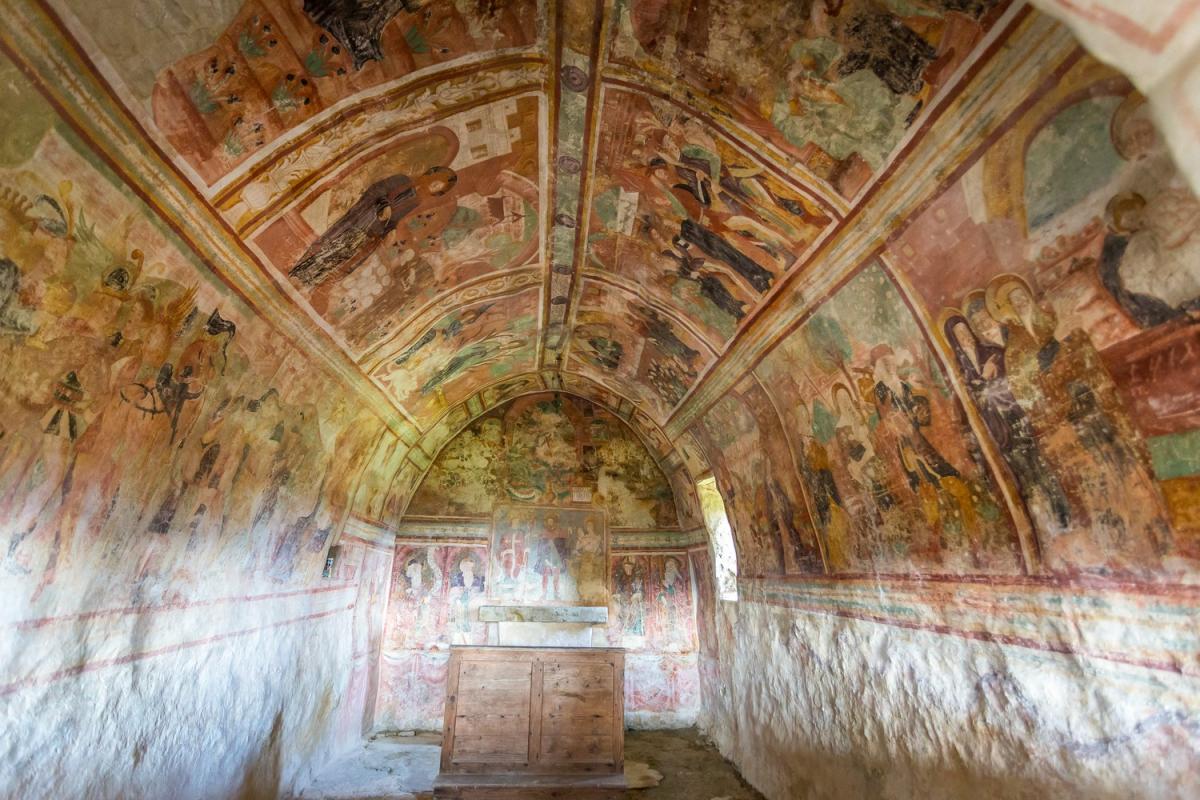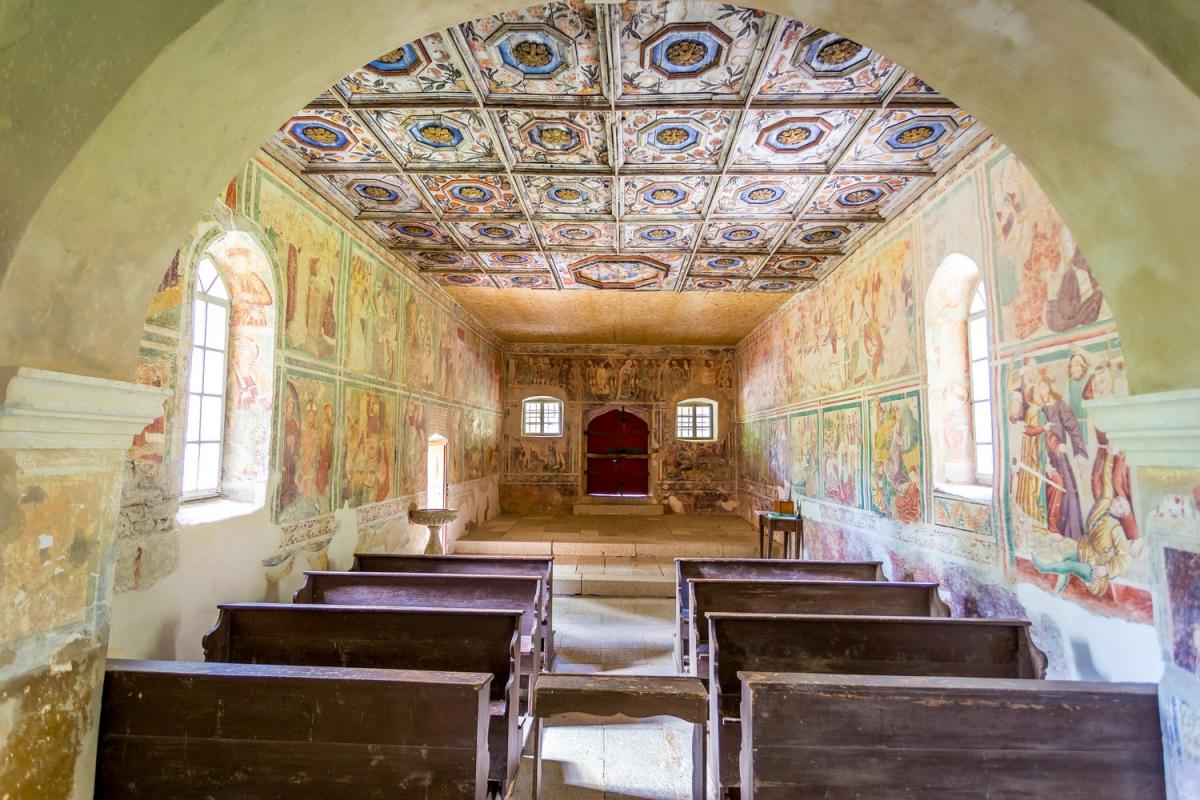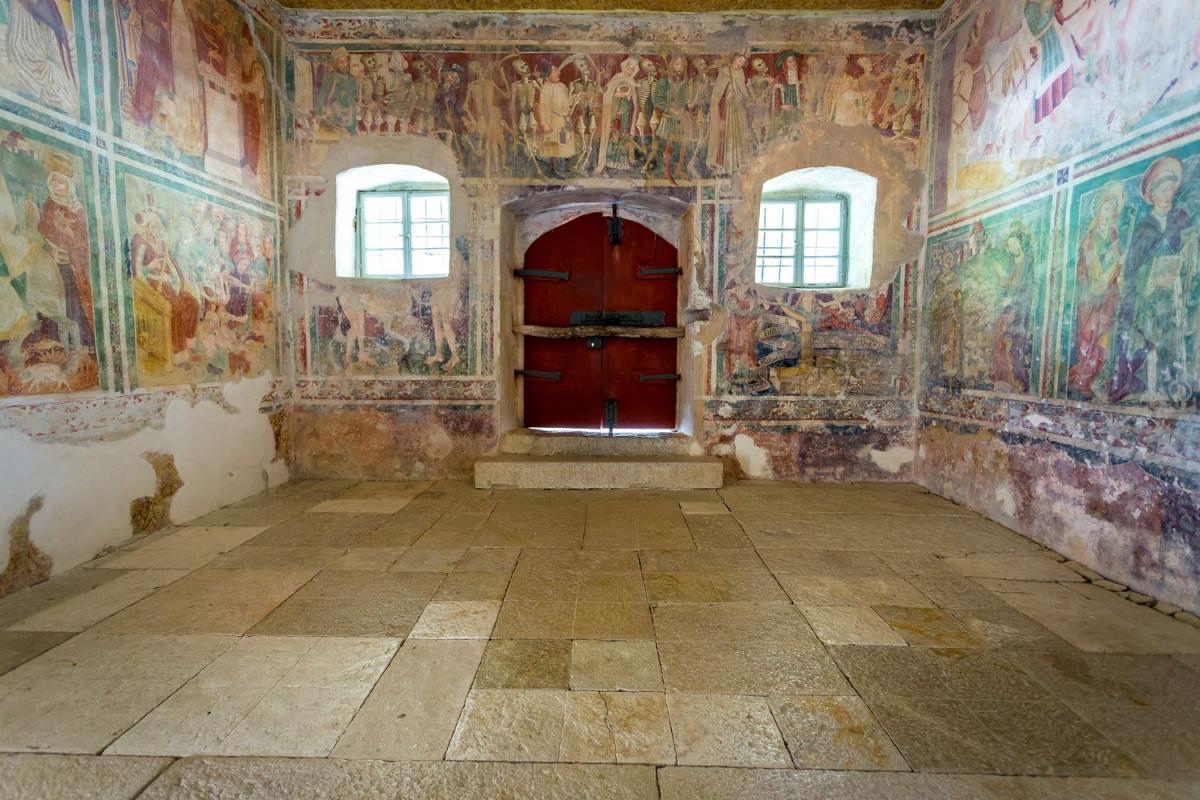Explore the Mysterious Frescoes of Tiny Istrian Churches
The hidden art treasure of Istrian tiny churches is waiting to be found. Let the quest begin!
 Tourists in Istria never stop to wonder how much natural, cultural and gastronomic treasures are concentrated on one relatively small peninsula. Some of these treasures are hidden, and can be found only by steadfast explorers.
Tourists in Istria never stop to wonder how much natural, cultural and gastronomic treasures are concentrated on one relatively small peninsula. Some of these treasures are hidden, and can be found only by steadfast explorers.
Dozens of tiny stone churches scattered across the Istrian peninsula hide one such treasure. Looking at their simple exteriors, one would never guess that they hide opulent frescoes reminding us of the creativity of ancient Istrians.
When were Istrian frescoes painted?
Most of the Istrian frescoes were painted between the 11th and 16th century. Their builders believed that the church is not finished until master painters adorn it with frescoes.
In the Middle Ages, frescoes were much more than pure adornment. To illiterate peasants, the scenes they depicted told Biblical stories. Ancient Istrians admired the Biblical scenes and prayed to the portrait of the patron saint of their church, parish and town.
However, frescoes were often frightening to ancient Istrians as well. Master painters often painted scenes of the last judgment above the church doors to remind the congregation that sin is not gainful.
 Find the most famous and frightful Istrian fresco!
Find the most famous and frightful Istrian fresco!
The Dance of Death is the most famous Istrian fresco. You can find it in the Gothic Church of St. Mary on Škriljinah in Beram. Along with the Pula Arena and the Euphrasian Basilica, this fresco is the most recognizable cultural monument of Istria.
It was finished in 1474 by master Vincent of Kastav, with the help of two other painters. One of them painted the famous scene of the Dance of the Death, and the other painted St. Martin the horseman, who cuts a piece of his luxurious cloak and gives it to a freezing, bare and poor passer-by to wrap himself in it. Vincent painted the impressive Adoration of the Magi, the scene filling the entire upper part of the north wall.
The first scene you will encounter upon entrance is an unusual representation of a jester. After a few moments, when the eye adjusts to the unlit interior, the figures of saints appear before you within the fields framed by acanthus leaves.
 The Dance of Death is displayed before you on the west wall. This fresco was painted after the bubonic plague epidemic, showing that in death, we are all equal and no one can escape it. Beside the dancing corpses, walking in a silent procession towards the open grave are the pope, cardinal and bishop, king and queen, fat innkeeper, child, beggar and soldier to whom even the firm armor is of no use, and finally a salesman, who fails to bribe death with gold coins. Death plays the bagpipes, providing the rhythm to dancing skeletons.
The Dance of Death is displayed before you on the west wall. This fresco was painted after the bubonic plague epidemic, showing that in death, we are all equal and no one can escape it. Beside the dancing corpses, walking in a silent procession towards the open grave are the pope, cardinal and bishop, king and queen, fat innkeeper, child, beggar and soldier to whom even the firm armor is of no use, and finally a salesman, who fails to bribe death with gold coins. Death plays the bagpipes, providing the rhythm to dancing skeletons.
How to find the most famous Istrian fresco? Learn here.
Explore Istrian frescoes!
Where to find other impressive Istrian frescoes? For more information, visit the web page Istria Culture.
Visit the colorful frescoes telling the tales of times gone by. Get closer, find unusual details and take pictures of them.
Examine them in the peace and quiet of centuries-old churches and for a brief moment feel the connection with the people who once stood there praying and hoping.












